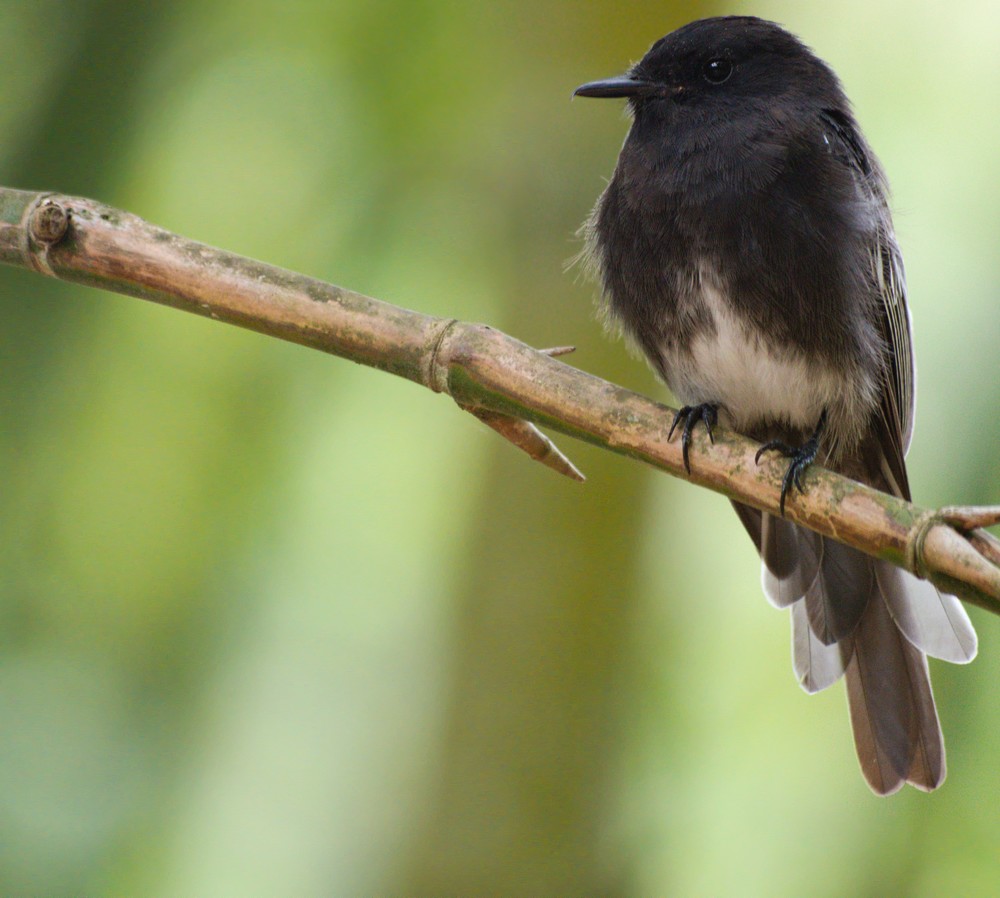Common species – reference page sponsored by Hotel Tolimán
Family Tyrannidae (tyrant flycatchers, calyptura) – Moucherolle noir en français
First publication: 07 July 2019– Last update: 08 December 2022

This medium-sized flycatcher is widespread and often common between Southern United States and the mountains of northern South America; farther south, it is a more localized resident of the Andes (to Southern Argentina). It always needs aquatic habitats, usually in freshwaters (lakes, ponds, streams, rivers…) but it can sometimes live on the coast.

A video and several photos thanks to Hotel Tolimán
This page was partially published in 2019 with photos from Colombia. It is a widespread bird, but it can be a bit more difficult for photographers than average because the blackish and whitish tones side by side often imply under-exposition of the dark parts, over-exposition of the lighter ones and/or noise. Since then, I have taken photos in Mexico and some images taken in this country have just been added for the update. However, it lacked high quality and larger photos or video for Flickr. Such a widespread and special bird “deserves” more than a partial page and regular photos.
My stay at Hotel Tolimán quickly gave me the needed opportunities. Thus, after the Painted Bunting from the rural areas, here is a bird from the lakeside. By hiding behind a boat on the riverbank, I got the best shots. A piece of wood in the mud that emerges above the surface of the water is appreciated by several individuals to catch insects in flight, a classic “flycatching” tactic (see explanations in the video); other species sometimes sit there as well.
In addition to the hunting scenes, thanks to one of the individuals who perched in the branches of a tree to preen, images in a very different context are also offered.
We would certainly like to show you more birds from rural areas as well as from the water edge, but we cannot forget those from the hotel gardens and the specialties of the mountains (the most difficult targets). Species from these different locations will therefore be published in the following pages.
Valery Schollaert

Like many birds that regularly sit on the stones of a watercourse, it often performs movements such flicking wings or wagging tail while resting it is a form of mimicry with its environment which is sometimes in motion (for instance when it is a stream). Its nest has the shape of a half-bowl, attached to a vertical wall (cliff, wall, bridge, broken trunk, etc.), often reused by the couple (it is a usually monogamous species) year after year. The incubation (3-6 eggs) especially by the female, lasts a little more than two weeks then the young are fed by both parents in the nest for nearly three weeks.
It is an insectivorous bird (it almost always captures in flight) which is doing well overall but seems to be decreasing in the USA.
Taxonomy and subspecies
It is quite distinct from the other American flycatcher and divided into 5 or 6 subspecies, which form two groups. In the center of Panama to the south (mountains of South America), there is a lot of white in the wings. From western Panama to the western United States, there is very reduced or thin white edges on the wing feathers. The idea that these two groups would form distinct species has already been suggested by some experts.

Here is a classic sighting for this species: perched prominently on a boat, a rock, or other another perch near water. The plumage is dark grey (and not black despite its name in most languages) with a white belly.

This photo is interesting from a technical point of view. The image is taken at low speed and reduced sensitivity to obtain sharper image on the eye; due to the reduced speed, the slightest movement causes major blurring. It is grooming… watch better this behaviour in our video.

This perch is covered with numerous droppings: several flycatchers use it as a hunting post. See a long sequence and several captures of insects in our video.

The nominal subspecies (endemic to Mexico) recalls the previous one, which lives further south, but the white of the belly is more extensive.

As with many flycatchers, the outer rectrices are edged in white.

The tail feathers are moulting. The South American subspecies show thick white edges on the wings.

Here is a front view of the same individual as in the previous photo. We can see the new tail feathers growing.

We can clearly see the famous edges of the wings which indicate a South American bird. Note the mimicry with its natural environment: water and rocks.

The feeding of young passerines is quite stereotyped, whatever the species and, in many cases, even among distinct families. The colourful bare gapes, the begging attitude of the juvenile and the speed of the scene are some of the characteristics of this moving moment.
Names suggested by Holistic Encyclopedia in six chosen languages.
- Spanish: Mosquero negro (*)
- Portuguese: Papa-moscas-fibi-preto
- German: Schwarzkopf-Phoebetyrann
- Dutch: Zwarte Phoebe
- Italian: Fibi nero
- Russian: Чёрный фиби
(*) As usual with species widespread in the Neotropics, there are a multitude of names that are sometimes very different from each other: Atrapamoscas cuidapuentes, Cazamoscas negro, Mosquero de agua, Papamoscas negro, Pitajo negruzco, Viudita de río, Tigüín de agua or even Febe guardarríos.
See names in dozens of other languages with Avibase
Listen to Black Phoebe voice in Xeno-Canto

[Species #553 of the Holistic Encyclopedia of Birds project]
List of other species pages: taxonomical – day per day

All photos and text are © Valéry Schollaert 2018 – 2019

